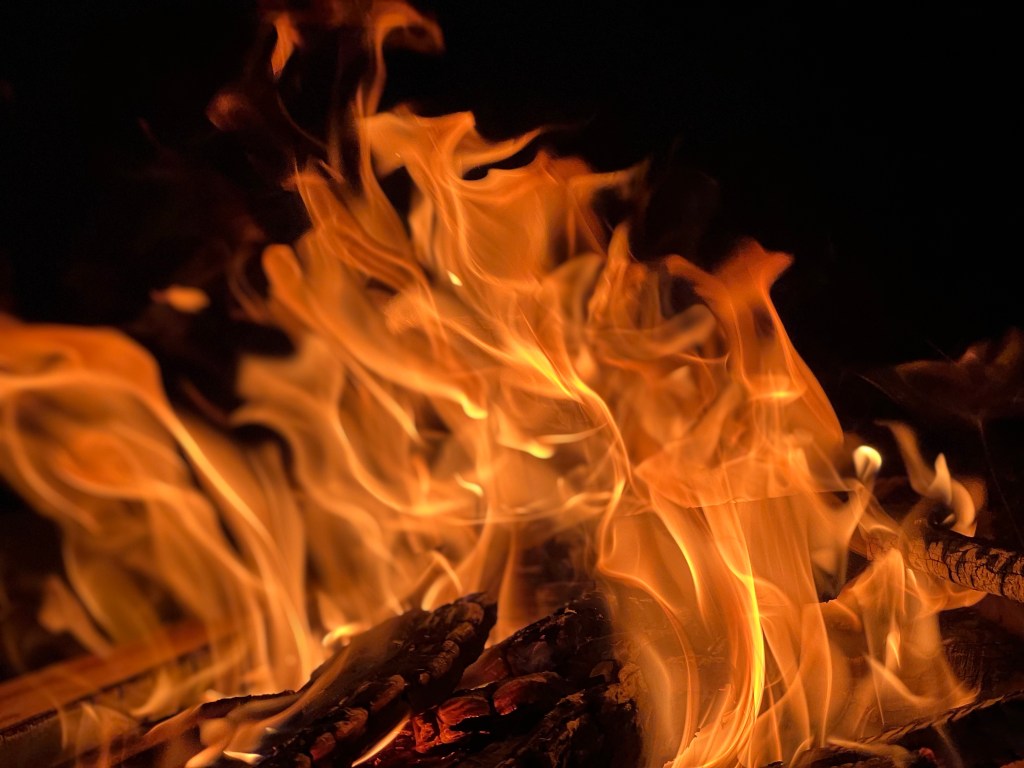Fire is one of those things that no matter how many times you see it, or how much you understand it, you can’t help but become transfixed by it. It’s captivating, entrancing, primal, powerful, dangerous, yet calming and graceful. Staring into the flames is a hypnotic, meditative experience. It’s probably the most kindred most of us ever feel with moths. Yet, ask anyone to explain what exactly fire is, and you’d be hard pressed to find a unified, much less correct, answer. It’s hot, yes. It’s bright, too. Oh, and sometimes it’s different colors! Of course, everyone’s got an opinion on the best way to build one, too—the secret is good airflow, by the way. So, what exactly is fire?
What is Fire?

To understand fire, we first have to look at where it comes from, or what causes it. In a sense, it’s a catch-all for a range of captivating chemical reactions that occur when combustible materials, such as wood or gasoline, react with oxygen in a process called combustion. This chemical reaction releases energy in the form of light and heat, giving birth to the enigmatic dance of flames.
Unraveling the Light
Have you ever wondered why fire emits light? The light emitted by fire is the result of incandescence, a phenomenon in which heated objects produce visible light. As the temperature of a flame rises, the atoms within it become energized. Now, this next bit is a tad complicated. Essentially, every atom has a specific amount of electrons, and energy levels in which the electrons orbit the nucleus, or center, of the atom. Electrons can move between levels, though, either jumping to a higher level when there’s excess energy, or dropping back down to a more base level state. Thing is, energy isn’t created or destroyed—it’s transferred or transformed. Energized atoms release their excess energy in the form of photons, aka light, creating a breathtaking display of colors ranging from pale yellows and oranges to vibrant reds and blues.
The Color Of FIre
The hues we witness in flames stem from the specific atoms and molecules present in the burning material. For instance, the vibrant blue flames of a gas stove arise from the combustion of natural gas, which contains elements like carbon and hydrogen. Copper compounds, burn green and are often used in firework displays. Temperature also plays a role. Cooler fires range are red and range between 980 and 1800 degrees Fahrenheit, white flames burn around 2600 degrees, and blue flames burn around 3000 degrees. Of course, these colors also represent the energy of the light.
The Heat of the Matter

Fire’s heat, an inseparable companion to its luminosity, is a result of the energy released during combustion. When combustible materials react with oxygen, they undergo chemical changes, breaking their molecular bonds and releasing stored energy. This released energy manifests as heat.
A Hollow Nature
When we observe a flame, it may appear solid and substantial, but in reality, fire is anything but that. Fire is a process, an aura, an illusion, not a physical entity. It exists only in the transitional space where combustion is occurring. The appearance of a solid flame is an optical illusion created by the continuous movement and rapid expansion of heated gases. These gases rise, leaving a void in the center. In a sense, fire is actually hollow, as odd as that may sound.
Fire is enigmatic, energetic, and hopefully know completely explainable. Next time you’re sitting around a fire with friends or family, you too can be insufferable in your thorough explanation of the physics of fire. Congratulations (and my condolences to your friends and family…and mine)


Leave a Reply